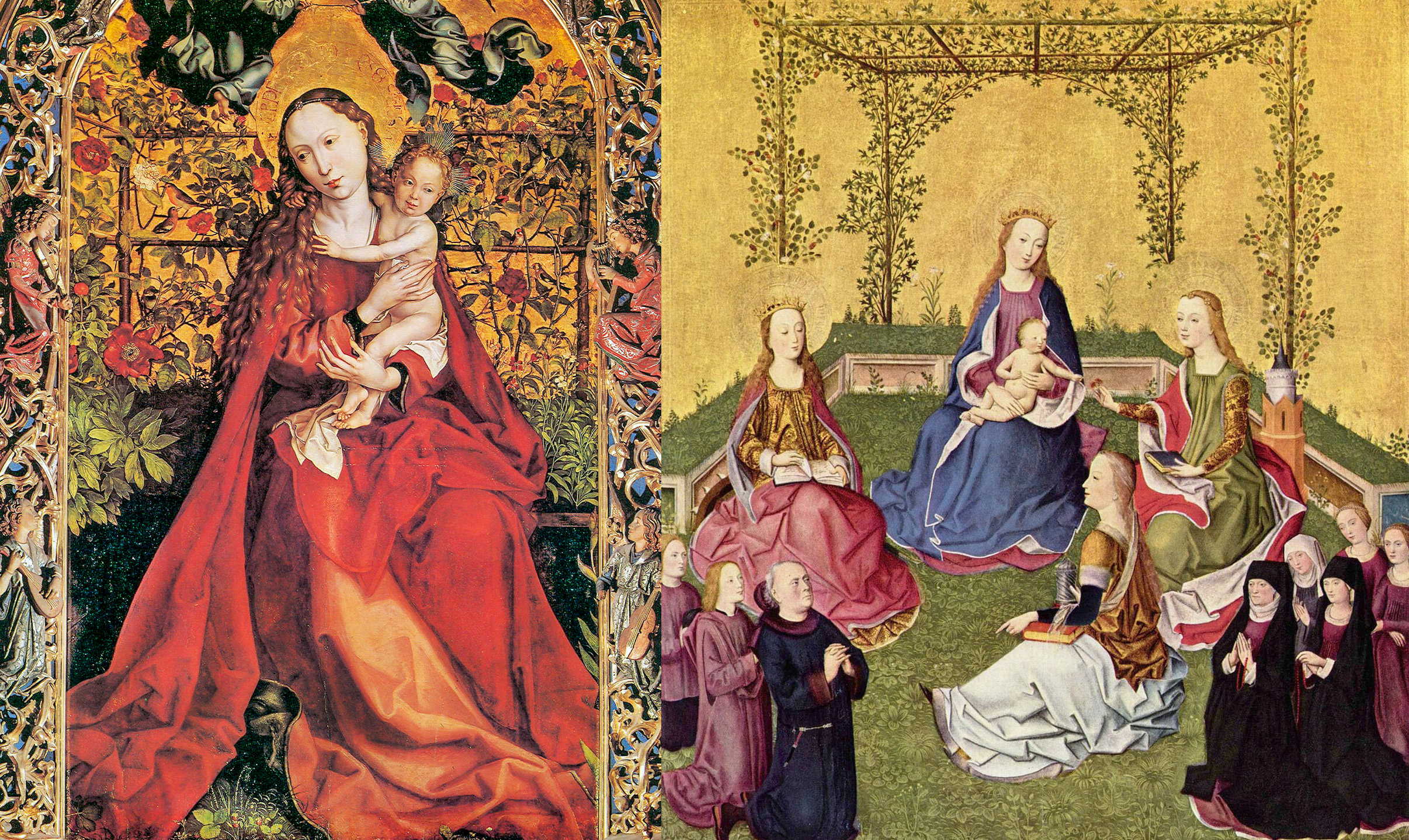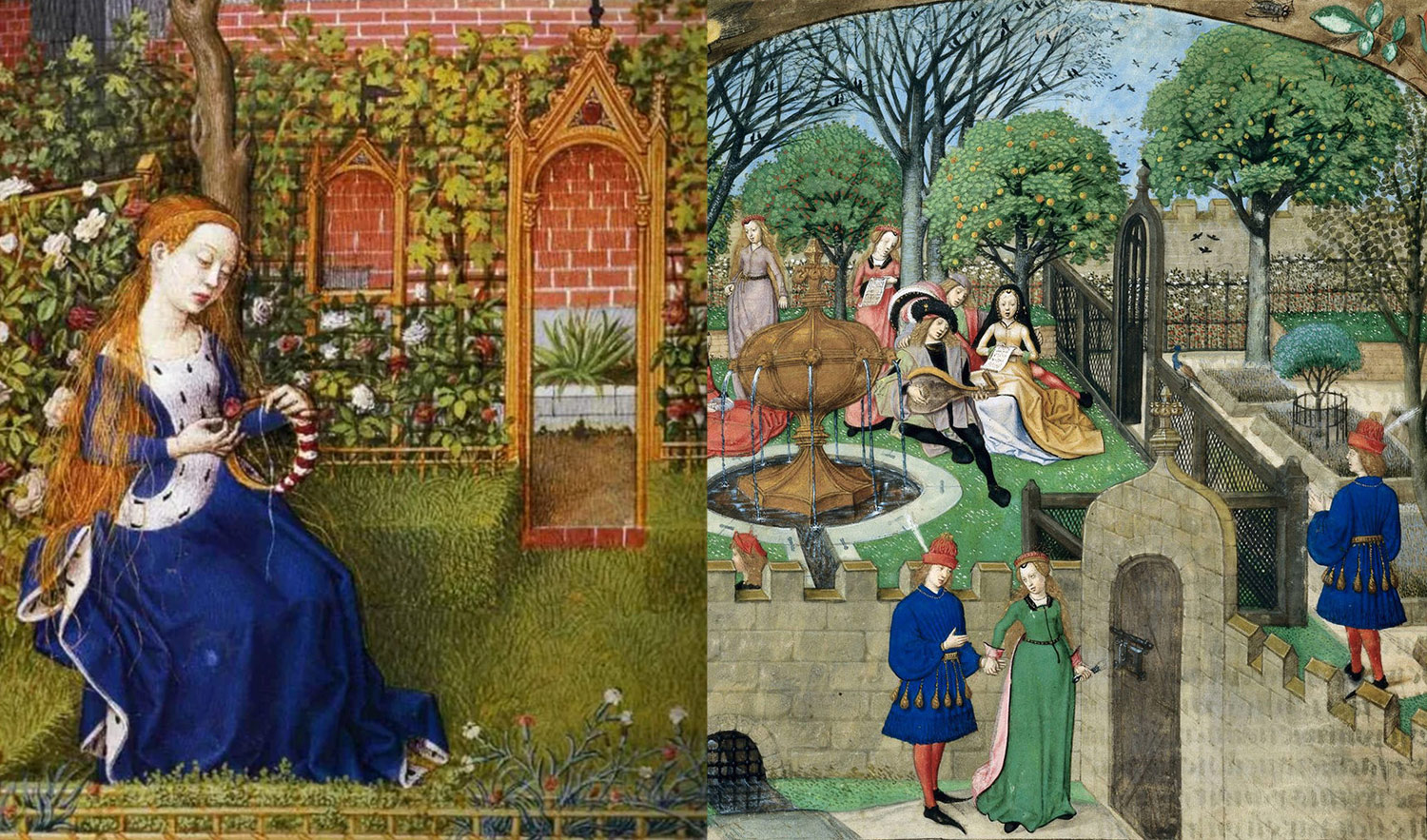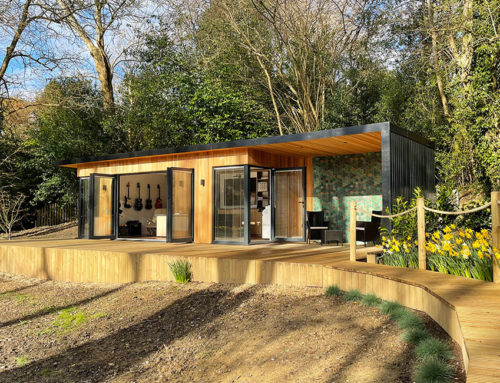Welcome back to the Fascinating History of Garden Buildings series, in this article, we dive into the Medieval depictions of garden buildings, which also held a religious and spiritual meaning during this time…

Art By A Room in the Garden
Hortus Conclusus
Did you know? Hortus Conclusus is Latin for “enclosed garden” or “walled garden”, Hortus relating to the term “Horticulture” and Conclusus relating to “enclosed” or “enclosure”. It is portrayed in many paintings of the Virgin Mary holding baby Jesus, which was used to symbolise femininity, fertility and the purity of a “closed garden”.
The idea of having these secluded garden areas grew more and more popular throughout the medieval period. These gardens were typically small, surrounded by high walls, hedges or fences, with only one or a few entrances. A popular use of these was for growing vegetables and medicinal herbs, as well as an area to be at peace or pray.

Source: Wikipedia
The design of an enclosed garden was highly structured, divided into several parts, and often decorated with religious and allegorical sculptures, fountains, flower beds and shrubs and water features. With a symmetrical layout, geometric patterns, and carefully selected plantings, these enclosed gardens were designed to be a visual representation of the perfect paradise, with an emphasis on balance, harmony, and order.
Although an enclosed garden, for its time, could count as a garden room, garden buildings were also built within these gardens, usually made of stone or wood. They were usually located in secluded parts of the garden, such as near a pond or fountain, or at the end of a winding path, to provide a sense of privacy and seclusion. They were used for a variety of purposes, such as dining, reading, entertaining or accommodating guests. Some garden rooms were also used for religious purposes, such as for private prayer or meditation.

Source: The History Jar, ResearchGate
These garden rooms were surrounded by carefully cultivated landscaping and design to complement the structure and enhance its beauty. While garden rooms were mostly found in the gardens of wealthy nobles and royals, they were also used in some monasteries and religious communities.
Today, the concept of the hortus conclusus is still alive, as well as the idea of having both a garden and garden room that beautifully coincide and complement each other.
Did you enjoy this article? Check in now and then to keep up to date with new blog posts anytime. Look out for The Fascinating History of Garden Buildings Pt. 4, where we move into the Renaissance period and discuss the big influence two certain countries had on garden room design…
Have you checked out our previous articles? Feel free to browse them here: The Fascinating History of Garden Rooms Pt. 1, The Fascinating History of Garden Rooms Pt. 2.



